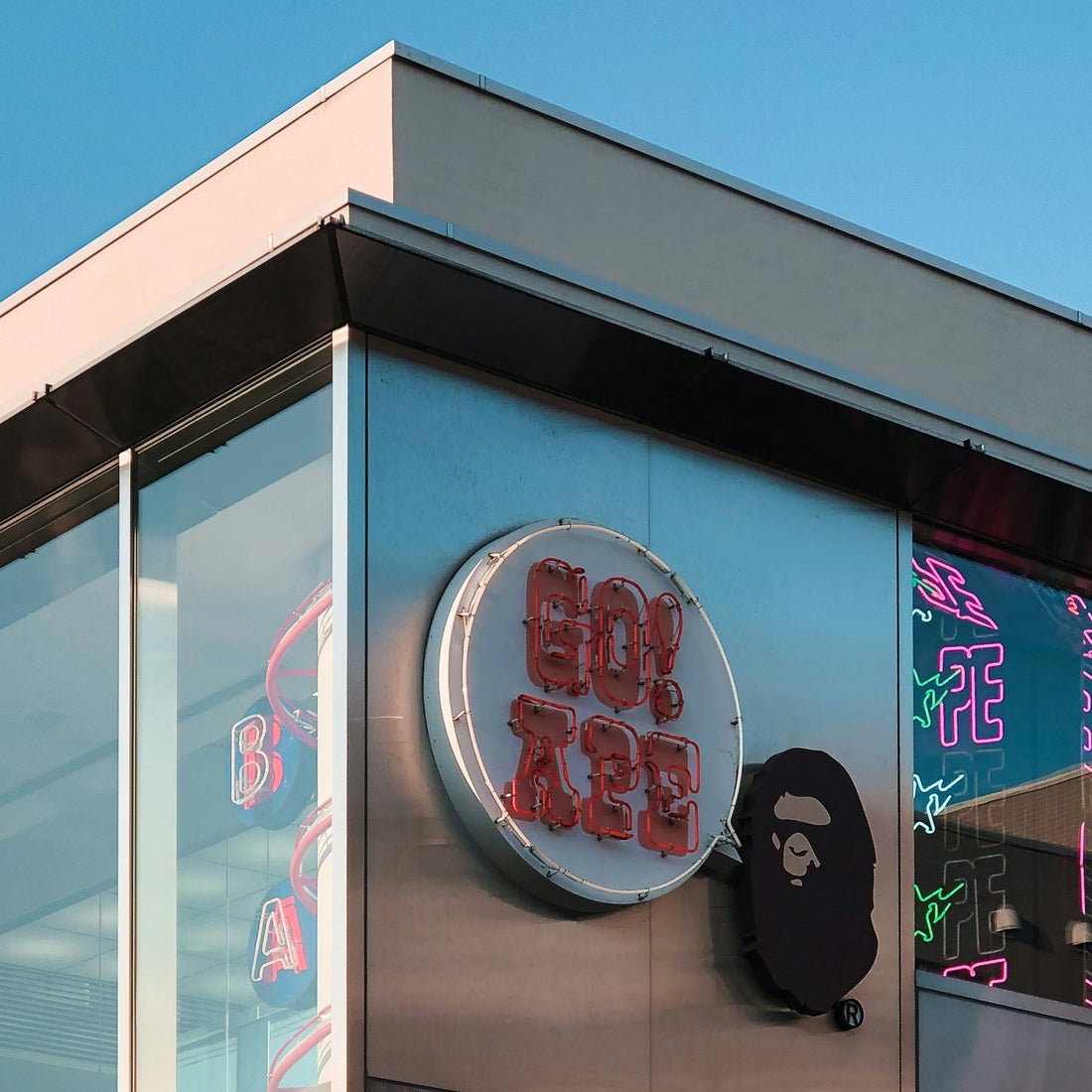
A Bathing Ape: controlled chaos
Share
When Nigo launched A Bathing Ape (BAPE) in 1993, he wasn’t just starting a clothing label—he was igniting a cultural shift. Born in the backstreets of Harajuku, BAPE arrived loud, confident, and entirely original. Where others borrowed from Western street culture, BAPE twisted it into something distinctly Japanese.
BAPE’s early designs were impossible to ignore. Shark hoodies with full-zip masks. Star-stamped sneakers that flipped the Swoosh. Neon camo in pink, green, and blue. It was bold, cartoonish, and deeply self-aware. The brand walked a tightrope between parody and prestige, constantly toeing the line but never losing balance.
While the graphics drew attention, the strategy was genius. BAPE operated with extreme scarcity, small runs, limited shops, and a near-mythical status among those in the know. You didn’t just buy BAPE. You hunted for it.
Nigo built BAPE into a creative empire, expanding into music with the Teriyaki Boyz, collaborating with Pharrell on Billionaire Boys Club, and bridging the gap between Tokyo’s underground and the global stage. Hip-hop icons like Jay-Z, Kanye West, and Lil Wayne helped push BAPE stateside, turning the ape head into a global symbol.
What made BAPE unique was its refusal to be quiet. It embraced chaos, visually, conceptually, culturally, but it did so with precision. Every element, no matter how loud, was considered. Even in its most crowded designs, there was control.
Though Nigo eventually sold the brand, BAPE’s legacy remains. It opened the floodgates for Japanese streetwear’s global recognition and showed that fashion could be fun, weird, and still worthy of reverence.
